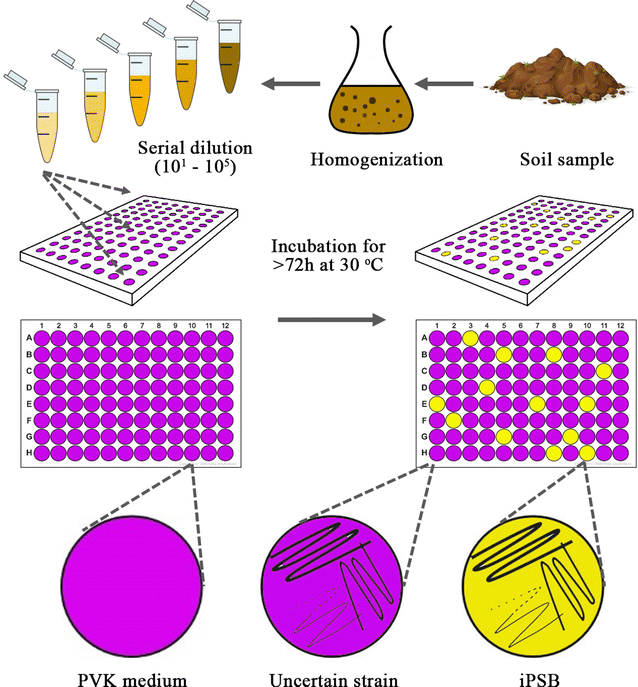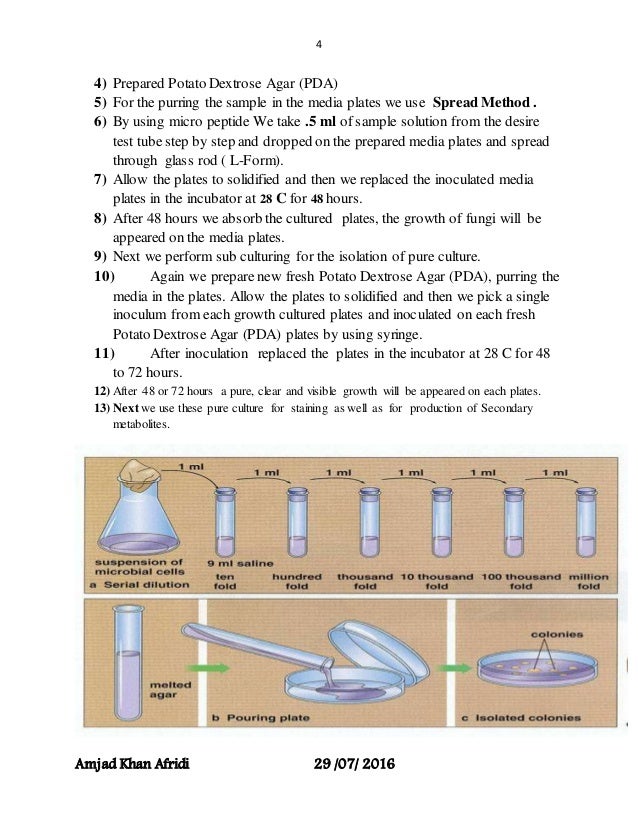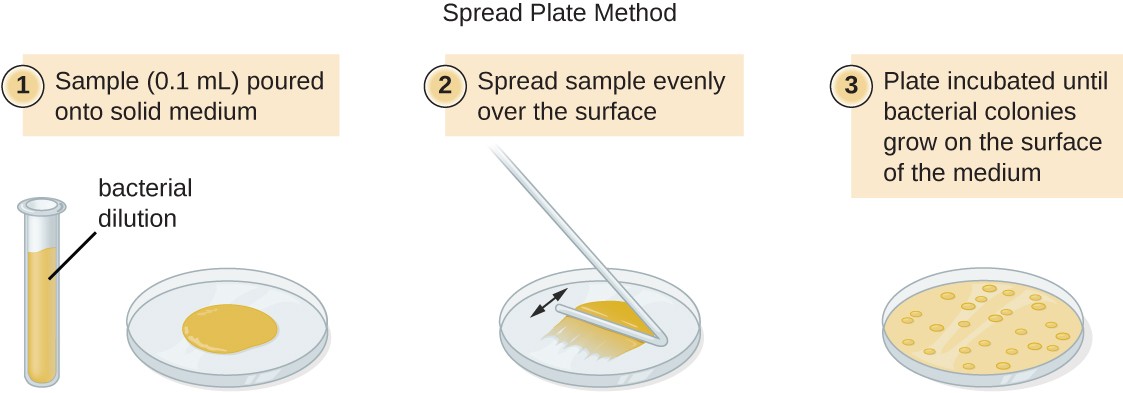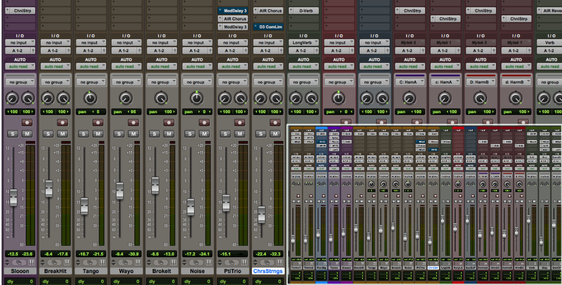Isolation of bacteria by dilution techniques
Isolation Of Bacteria By Dilution Techniques. The nutrient agar medium is kept liquid by holding it in a water bath at about 45°c, is poured. Streaking is suppose to cause the bacteria to fall off the loop and ultimately to be distributed over the agar�s surface; Gram stain reaction and cellular features of the culture. Along with serial dilution, spread and pour plating methods were done in order to count the number of isolated colonies in a sauce sample.
 Identification and characterization of From amb-express.springeropen.com
Identification and characterization of From amb-express.springeropen.com
General methods of microbial isolation 1. A major contribution to bacterial techniques was the development of methods using solid medium. Dilution culture, a method for growing the typical small bacteria from natural aquatic assemblages, has been developed. Serial dilution was done by getting. A small amount of diluted sample (diluted from mixed broth culture 10x10, 10x10x10x10, and 10x10x10x10x10x10x10x10) is mixed with melted agar (45 °c) and poured into empty, sterile petri dishes; The preservative was added to one sample.
Start studying isolation of bacteria by dilution techniques (lab)(finished).
Streak plate, spread plate and pour plate. A major contribution to bacterial techniques was the development of methods using solid medium. After incubation, samples of the cottage cheese (control) and samples treated with the preservative (experimental) were diluted and plated. View dilution techniques.pptx from biology 1112 at technical university of mombasa. Two samples of cottage cheese were inoculated with bacteria; Isolation of bacteria by dilution techniques often when a bacterial sample is collected it is not obtained as a single bacterial species but as many sometimes more than a thousand.
 Source: courses.lumenlearning.com
Source: courses.lumenlearning.com
Used to determine the number of bacteria in a sample; A small amount of the sauce sample and. This class focuses on the role of bacteria in disease. The following data were obtained from pour plates used to test the effectiveness of a food preservative. Populations are measured, diluted to a small and known number of cells, inoculated into unamended sterilized seawater, and examined three times for the presence.

Streaking is suppose to cause the bacteria to fall off the loop and ultimately to be distributed over the agar�s surface; A small amount of diluted sample is mixed with melted agar and poured into empty, sterile petri dishes. Into a visible colony that consists of one kind of bacterium. Dilution culture, a method for growing the typical small bacteria from natural aquatic assemblages, has been developed. Serial dilution was done by getting.
 Source: slideshare.net
Source: slideshare.net
After incubation, samples of the cottage cheese (control) and samples treated with the preservative (experimental) were diluted and plated. Into a visible colony that consists of one kind of bacterium. Serial dilution was done by getting. Populations are measured, diluted to a small and known number of cells, inoculated into unamended sterilized seawater, and examined three times for the presence. After incubation bacteria is visible as colonies in and on agar plate.
 Source: waterpathogens.org
Source: waterpathogens.org
In gram staining a purple crystal violet stain is used to stain the cells for 30 seconds then it is washed with water and grams iodine is applied for 30 seconds and. A small amount of the sauce sample and. In the serial dilution method, take the bacterial suspension and dilute it serially in the successive test tubes. A major contribution to bacterial techniques was the development of methods using solid medium. Two samples of cottage cheese were inoculated with bacteria;
 Source: courses.lumenlearning.com
Source: courses.lumenlearning.com
The first requirement for physically isolating a bacterium is that it can be cultured in the laboratory. A pure culture of an isolated microorganism can be isolated and quantitatively counted using serial dilution techniques. Two samples of cottage cheese were inoculated with bacteria; A successful spread plate will have a countable number of isolated bacterial colonies evenly distributed on the plate. For example lb medium or minimal medium for the cultivation of bacteria.
 Source: sites.google.com
Start studying isolation of bacteria by dilution techniques (lab)(finished). A small amount of diluted sample is mixed with melted agar and poured into empty, sterile petri dishes. Isolating a single bacterium species is the first step in identifying the bacteria possibly responsible for a disease process. Used to determine the number of bacteria in a sample; The most common method of isolation was to continually dilute a sample in liquid broth in hopes that at high enough dilution, only one type.
 Source: microbialgrowth101.weebly.com
Source: microbialgrowth101.weebly.com
General methods of microbial isolation 1. A pure culture of an isolated microorganism can be isolated and quantitatively counted using serial dilution techniques. A loop is used to streak the mixed sample many times over the surface of a solid culture medium in a petri plate. Gradient plate method (pour plate and streak plate technique) 4. Loop is used to streak the mixed sample many times over the surface of a solid culture medium in a petri dish.
 Source: pinterest.co.kr
Source: pinterest.co.kr
A successful spread plate will have a countable number of isolated bacterial colonies evenly distributed on the plate. Used to determine the number of bacteria in a sample; Populations are measured, diluted to a small and known number of cells, inoculated into unamended sterilized seawater, and examined three times for the presence. Isolation of bacteria by dilution techniques april 2020 why the need to dilute microbial samples? Along with serial dilution, spread and pour plating methods were done in order to count the number of isolated colonies in a sauce sample.
 Source: chegg.com
Source: chegg.com
Gram staining methods were applied on the given mixture of bacillus cereus, escherichia coli and staphylococcus aureus and then examined microscopically. The preservative was added to one sample. What are the three dilution methods commonly used for the isolation of bacteria? General methods of microbial isolation 1. A small amount of the sauce sample and.
 Source: amb-express.springeropen.com
Source: amb-express.springeropen.com
The actual technique for the isolation of microorganisms depends on the source and the physiological properties of microorganisms. This class focuses on the role of bacteria in disease. A major contribution to bacterial techniques was the development of methods using solid medium. Used to determine the number of bacteria in a sample; Soil samples and sieve (2 mm pore).
 Source: faculty.northlandcollege.edu
Along with serial dilution, spread and pour plating methods were done in order to count the number of isolated colonies in a sauce sample. Two samples of cottage cheese were inoculated with bacteria; The actual technique for the isolation of microorganisms depends on the source and the physiological properties of microorganisms. Isolating a single bacterium species is the first step in identifying the bacteria possibly responsible for a disease process. In gram staining a purple crystal violet stain is used to stain the cells for 30 seconds then it is washed with water and grams iodine is applied for 30 seconds and.
 Source: microbialinfo.com
Source: microbialinfo.com
Populations are measured, diluted to a small and known number of cells, inoculated into unamended sterilized seawater, and examined three times for the presence. After incubation bacteria is visible as colonies in and on agar plate. The actual technique for the isolation of microorganisms depends on the source and the physiological properties of microorganisms. This is true both in the environment and in and on our bodies. The nutrient agar medium is kept liquid by holding it in a water bath at about 45°c, is poured.
 Source: waterpathogens.org
Source: waterpathogens.org
• dilution should be continued to get a dilution of 1: Into a visible colony that consists of one kind of bacterium. A pure culture of an isolated microorganism can be isolated and quantitatively counted using serial dilution techniques. Purpose of isolation of bacteria by dilution techniques. A small amount of diluted sample is mixed with melted agar and poured into empty, sterile petri dishes.
 Source: sciencing.com
Source: sciencing.com
The following data were obtained from pour plates used to test the effectiveness of a food preservative. Loop is used to streak the mixed sample many times over the surface of a solid culture medium in a petri dish. After incubation, samples of the cottage cheese (control) and samples treated with the preservative (experimental) were diluted and plated. A small amount of the sauce sample and. The nutrient agar medium is kept liquid by holding it in a water bath at about 45°c, is poured.
 Source: microbenotes.com
Source: microbenotes.com
The preservative was added to one sample. Gram stain reaction and cellular features of the culture. The nutrient agar medium is kept liquid by holding it in a water bath at about 45°c, is poured. Isolating a single bacterium species is the first step in identifying the bacteria possibly responsible for a disease process. What are the three dilution methods commonly used for the isolation of bacteria?
 Source: cellgrowth.weebly.com
Source: cellgrowth.weebly.com
Purpose of isolation of bacteria by dilution techniques. The following data were obtained from pour plates used to test the effectiveness of a food preservative. Streak plate, spread plate and pour plate. A small amount of diluted sample (diluted from mixed broth culture 10x10, 10x10x10x10, and 10x10x10x10x10x10x10x10) is mixed with melted agar (45 °c) and poured into empty, sterile petri dishes; This is true both in the environment and in and on our bodies.
 Source: iul-instruments.com
Source: iul-instruments.com
Isolating a single bacterium species is the first step in identifying the bacteria possibly responsible for a disease process. Isolating a single bacterium species is the first step in identifying the bacteria possibly responsible for a disease process. Streak plate, spread plate and pour plate. Dilution culture, a method for growing the typical small bacteria from natural aquatic assemblages, has been developed. Along with serial dilution, spread and pour plating methods were done in order to count the number of isolated colonies in a sauce sample.
 Source: researchgate.net
Source: researchgate.net
The actual technique for the isolation of microorganisms depends on the source and the physiological properties of microorganisms. After incubation bacteria is visible as colonies in and on agar plate. This technique is much known for the isolation and culturing of bacteria. This class focuses on the role of bacteria in disease. 10000 (or can be diluted on the basis of requirements).
If you find this site value, please support us by sharing this posts to your own social media accounts like Facebook, Instagram and so on or you can also bookmark this blog page with the title isolation of bacteria by dilution techniques by using Ctrl + D for devices a laptop with a Windows operating system or Command + D for laptops with an Apple operating system. If you use a smartphone, you can also use the drawer menu of the browser you are using. Whether it’s a Windows, Mac, iOS or Android operating system, you will still be able to bookmark this website.






